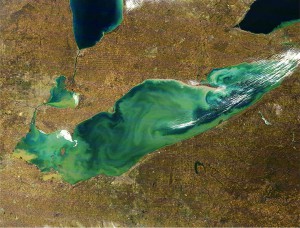One of the most common bloom-forming cyanobacteria (blue green algae) in freshwater ecosystems is Microcystis, which produces the liver toxin microcystin. Like many cyanobacteria, blooms of Microcystisareassociated with higher temperatures and the availability of nitrogen (N) and phosphorus (P). Manyfreshwater ecosystems are P-limited, meaningP plays the key role in the occurrence of most cyanobacteria blooms, asN is still available from the atmosphere (throughnitrogen fixation) even when N compounds are in low concentration in the water. The growth rates and toxicity of Microcystisare directly related to inorganic P (e.g. phosphate) concentrations. Yet several field and laboratory studies showthat elevated concentrations N, both organic N (e.g. urea, amino acids) and inorganic N (e.g. nitrate, ammonia), also increases the growth and toxicity of Microcystis. Increased N loading also causes Microcystis to produce antibiotic compounds (protease inhibitors) that discourage zooplankton grazing, further facilitating blooms.

Final results from a NCCOS sponsored research study shows the importance of N and P to the development of toxic cyanobacteria blooms in the U.S. Great Lakes. The study found that Microcystis possess great genetic flexibility to adapt to low levels of inorganic P and N. Using ‘gene expression,’ Microcystis turns on dormant genes to utilize less abundant organic forms of N and P. Even in the absence of P, Microcystis can flourish using low levels of organic N.
That Microcystis adapts and flourishes in low P zones by using organic N suggests that management schemes that focus solely on reducing the delivery of P to, for example, western Lake Erie, may actually enhance the growth and dominance of Microcystis. This finding allowedthe U. S. Environmental Protection Agency (EPA) to recently recommend dual control of both P and N.
Results of this study were reported on by project scientists Drs. Christopher Gobler and Matthew Harke at the Eighth Symposium on Harmful Algae in the United States, November 15-19, 2015, Long Beach, California.
For more information, contact John.Wickham@noaa.gov.
